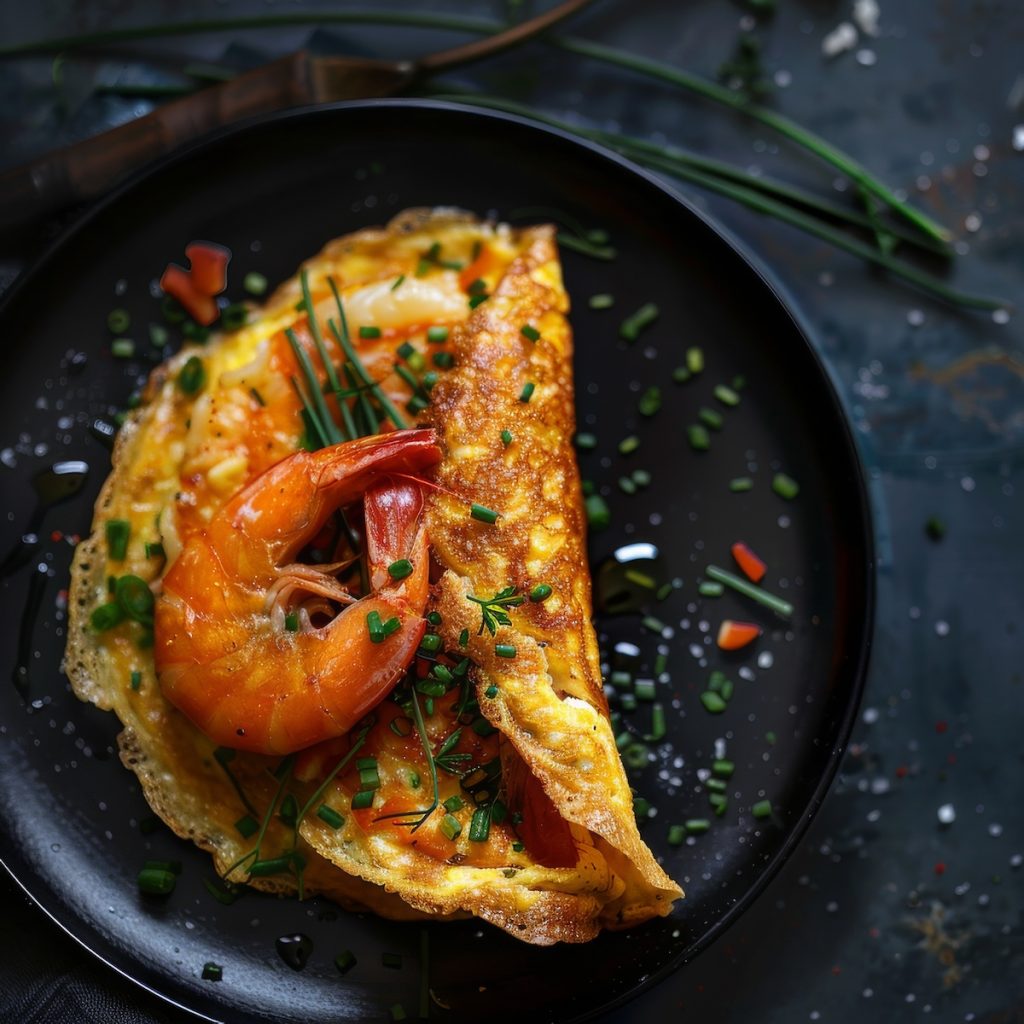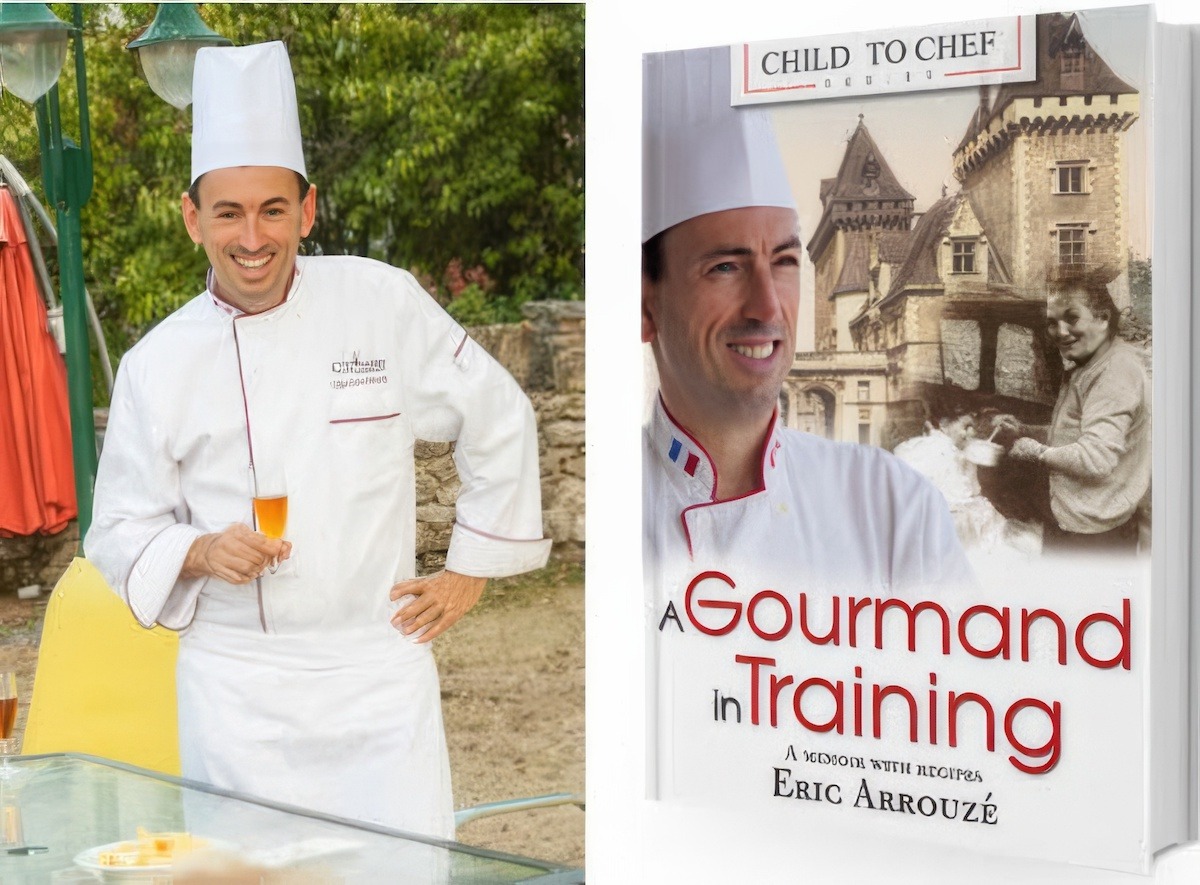I’m not sure why Chef Eric Arrouze calls this a “Priest’s Omelette,” but it sure looks delicious, and any recipe that calls for crème fraîche can’t be that bad.
Chef Arrouze is from France, where they spell omelet, which is fine with me. Here’s what he says about this tasty-looking recipe,
A decadent mushroom omelet recipe with hints of Cognac and cream perfectly rolled and not overcooked, as a French chef or priest might master.
Alternatively, you may substitute the chives with basil or tarragon and the scampi with lobster or shrimp.
This recipe comes from Chef Eric’s new book, a memoir called Child to Chef—A Gourmand In Training. You can read about it and my Interview with Chef Arrouze.
Priest’s Omelet History
The “priest’s omelet,” also known as “omelet de curé” in French, has an exciting and somewhat humble history rooted in the traditions of French country cooking. The dish gets its name from the idea that it was a simple yet comforting meal that a priest might be served, especially in rural areas, when visiting parishioners or on special occasions.
Origins
The priest’s omelet’s origins are tied to offering simple yet hearty meals to visiting priests or clergy, particularly in small villages with limited resources. In these settings, eggs were often a readily available and affordable ingredient, making them an ideal base for a meal. The dish’s simplicity made it accessible for even the most modest households to prepare.
Preparation and Variations
Traditionally, a priest’s omelet is made with basic ingredients—eggs, butter, and sometimes a bit of milk or cream. The richness of the butter and cream reflects the idea of making something simple but indulgent, a special treat for the visiting priest. This emphasis on indulgence will make the audience feel the special treat the dish represents.
Cultural Significance
The priest’s omelet symbolizes hospitality and the importance of sharing what you have, no matter how modest, with others, particularly those in the clergy who were highly respected in the community. The dish embodies the idea of offering the best you have to guests, a common theme in many culinary traditions.
While it may not be as well-known today, the priest’s omelet remains a charming example of how food can reflect deep-seated cultural values, such as generosity and reverence, in even the simplest of dishes. This stress on cultural values will make the audience feel the depth of its significance.
What Are Scampi?
I asked Chef Eric about “scampi” because I’ve always considered it a way to prepare shrimp. Still, he tells me “scampis are langoustines” or, as Wikipedia describes them, “a slim, orange-pink lobster which grows up to 10 in long, and is “the most important commercial crustacean in Europe”.
Chef Eric says, “They are different from shrimp and much more delicate and expensive,” so I’m guessing they are very difficult to find in most supermarkets. Try substituting shrimp or lobster.
The Priests Omelette Recipe
Ingredients
- 2 teaspoons grape seed oil
- 3 eggs free range (non free range will work too)
- salt and pepper to taste
- ½ tablespoon chives chopped
- 2 tablespoons crème fraîche or heavy cream
- 1 tablespoon shallot minced
- 3 large scampi or jumbo prawns
- 2 tablespoons Cognac or Brandy
- ½ teaspoon butter
Instructions
- Briefly blanch the scampi (prawns) in boiling salted water for about 30 seconds and refresh in ice cold water.
- Remove the shells and cut the tails into half inch pieces.
- In a bowl, beat the eggs, seasoning, and chives with a fork for about a minute or until slightly foamy.
- Heat the oil in the omelette pan, add the chopped shallot and cook for about a minute without browning.
- Add the diced scampi and cook on low heat “for a minute then flame with Cognac. (Be careful when you "flame" the Cognac. It can be dangerous!"
- Add the crème fraîche and simmer for a few minutes or until sauce has thickened.
- Briefly beat the eggs again and add to the pan. Turn the heat down to low and use a fork to scramble the stir the eggs. As the eggs set on the outer edges of the pan, use a fork (or a wooden spatula if you are using a non stick pan) and draw them toward the center of the pan.
- Repeat as needed while shaking the pan to allow any uncooked liquid set and cook until eggs almost form a large pancake. With a spatula, lift up and fold.
- When the omelette sets, slide onto a serving dish. Fold a second time to create a rolled shape with the omelette.
- Wipe the pan with a piece of paper towel then add butter to melt. Brush the top of the omelette with the melted butter to make it shiny; this is called to “lustrate” the omelet - it’s a must in the art of omelet making.
- Serve immediately.










3 Responses
Very Nice ~ Would really like to see this submitted at FoodFotoGallery.com so I can share with all my foodie friends 🙂
Hi CJ, you would have to ask Chef Eric Arrouze for permission since it is his photograph, not mine.
It looks very delicious!